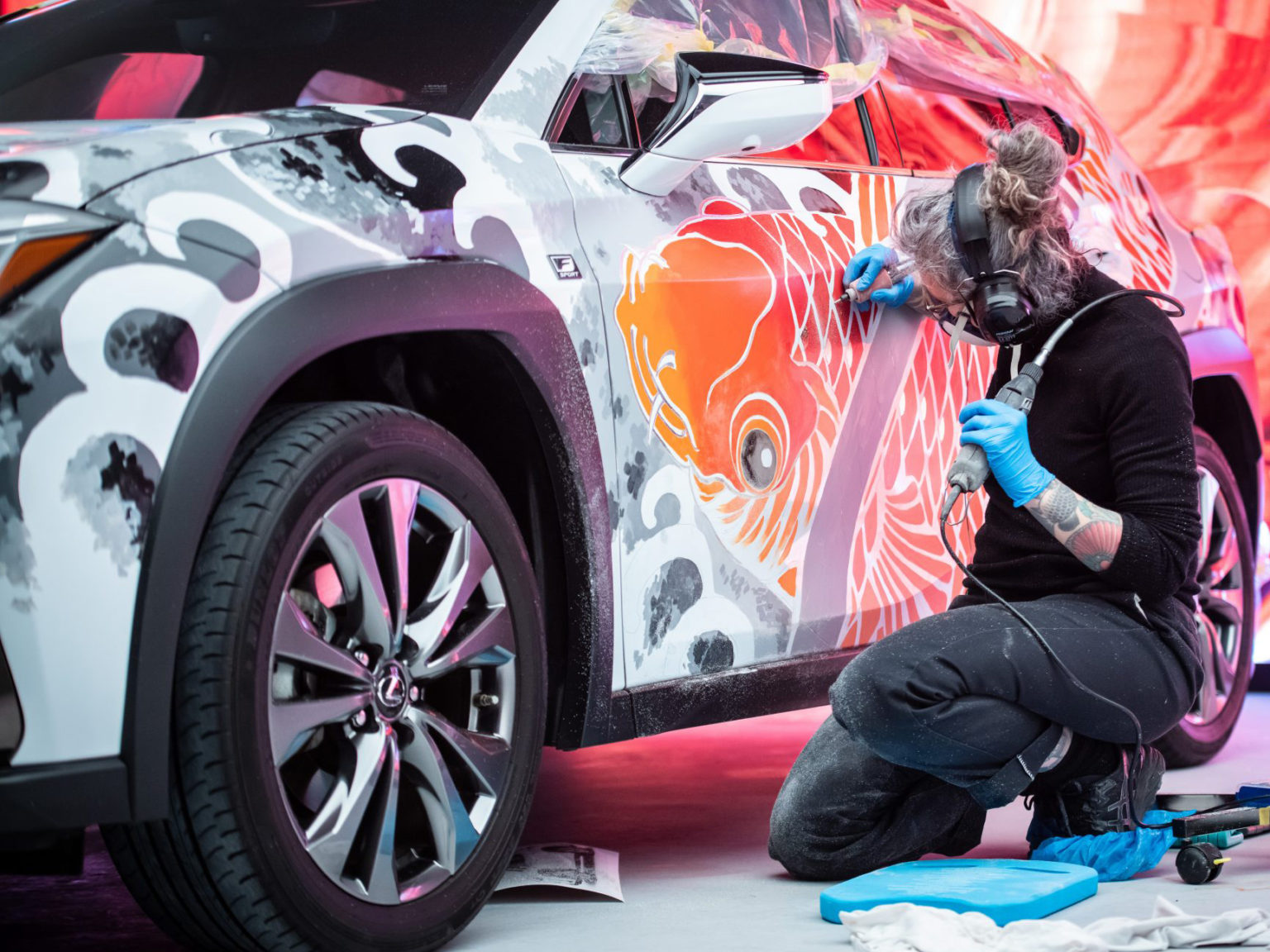Earlier this year, tattoo artist Claudia De Sabe inked the world’s first tattooed car, a 2020 Lexus UX. The work is a combination of Japanese artistry and new-age craftsmanship.
Instead of using a traditional tattoo gun, De Sabe used a Dremel, which caused indentations in the model’s steel skin, similar to what a needle does to a human’s skin. It was the Italian native’s first time tattooing something other than the human body inn her 15 years of professional experience.
The design features a sweeping koi carp along the length of the vehicle. Koi are common in Japanese culture as they are believed to represent good fortune and perseverance. Koi can live to the age of 35. In contrast, goldfish traditionally live to be 10 to 15 years old and bass only make it five to 10 years.
Snakes and botanicals also play into the design.
From concept to completion, the project took six months to produce. The actual tattooing took place over five eight-hour days. De Sabe, who has a studio in London, recently divulged more about the project.
Starting with the outset, De Sabe took inspiration from Japanese culture. She has traveled there and studied Japanese tattooing. “My main inspiration for the design of the car was all the beautiful artwork that I’ve seen in Japan; in the temples, Ukiyo-e prints, all that artistic background,” De Sabe said. “That also is very much translated and used in Japanese tattooing.”
Lexus – The Making of the World’s First Tattooed Car
www.youtube.com
When designing a tattoo, the artist has to consider the layers of structure of the human body. The same occurred for De Sabe when working with the UX. “When you tattoo somebody, you’re mainly thinking about their body structure and how the muscles and tissues go onto the skeleton,” she said. “I saw the car in exactly the same way. When you work on skin, there is a softness to it. Completely different when you’re working with a Dremel onto the car body. It is just metal on metal.”
Further describing the carving process, De Sabe said:
“I used a Dremel to carve the paint off to reveal the metal of the body of the car as an outline, especially for the waves and the koi, because we liked the idea of scratching the car, but to do something beautiful. On top of that, we used car paint to fill in the koi design and the waves. Most of the design work is based on that, and we just used gold leaf to give a little bit of accents of light, and add a 3-D element to it, across the car.”
In a traditional year, this vehicle would likely make its way to auto shows across the world. Stay tuned to see where it pops up on display.








